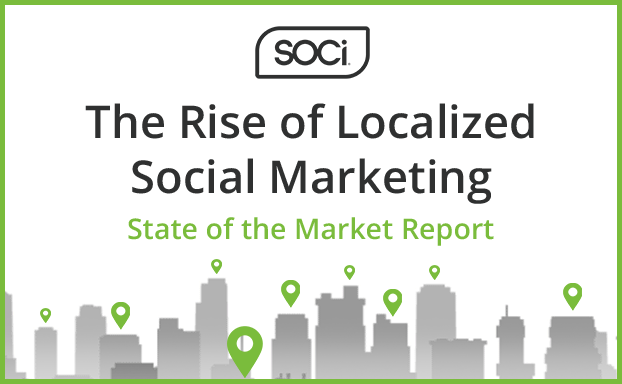Business owners aspire to receive national recognition for their brand, but the platform stats and trends show that consumers want to engage with businesses at the local level. Every business with a physical location should be building a presence in each community that it serves, and social platforms are giving business owners the tools to make that happen.
Here are five statistics — pulled from SOCi’s Q4 2018 State of the Market report — that will help us explain why smart brands are shifting to a localized social marketing strategy.
1. There are 4x more Facebook Business Pages on the SOCi platform than profiles on all other networks combined.
Facebook is the dominant social media profile for multi-location marketing, and that’s likely because Facebook allows businesses to create one page for their corporate brand as well as individual Local pages for each franchise location.
Facebook has the most robust version of this localized page model, but other platforms are quickly catching up with new localized marketing tools. Google, for instance, has the Google Knowledge Panel — the box on the right side of search results that showcases information for a specific business location when users search for it by name. There are branded knowledge panels for corporations, and local panels for individual business locations. Instagram — which is owned by Facebook — also just introduced a new platform feature that allows for local pages for individual businesses. So, what are users doing on these local pages?
2. 72% of brand engagement happens on Local Pages
The fact that local pages are getting more engagement than corporate brand pages tells us that local content drives engagement, but what kind of engagements? Is it the kind that will help grow a business?
There is a difference between high-value and low-value engagement. Comments, direct messages, shares and reviews count as high-value engagements. Likes and video views fall into the category of low-value engagements. That’s because comments, messages and reviews take more effort than simply clicking the like button, or watching an autoplay video. These kinds of high-value engagements indicate a real connection with the audience and are favored by Facebook’s algorithm shift, which has limited the reach of content that receives low-value engagement.
3. 66% of content impressions happen on local pages.
Impressions refer to the number of people who see a piece of content once it’s posted on Facebook. It’s safe to assume that national brand pages have more followers, so how can local pages get 66% of impressions? Facebook has limited the reach of content that people don’t engage with, but these local pages are getting plenty of engagement — as shown in the previous statistic. When business post localized social content that resonates with the target audience, and that people engage with, it can earn a high number of impressions without the page having a high number of followers.
4. 88.3% of Facebook engagement comes in the form of low-value engagement (likes).
5. High-value engagements — comments and direct messages — represent just 9.1% and 2.6% of all engagements, respectively.
These stats highlight the importance of localized social marketing. High-quality localized content gives businesses the best chance to engage the consumers around each individual business location. Localized content is inherently relevant because it’s related to the communities around each individual business location. After all, 72% of brand engagement is happening on Local Pages for a reason.
Localized social marketing just isn’t some niche marketing strategy, either. On the SOCi platform alone, there are 48,000 local social profiles and 19,000 review site profiles as of Q4 2018.
Brands are recognizing the chance to seize the “buy local” movement and pouring resources into the creation of localized content. A truly effective localized content strategy is created from cooperation between the corporate brand and staff at the individual business level. Technology like SOCi can help facilitate that cooperation and streamline the workflow.
For more insight into how consumers are engaging with brands at the local level, download SOCi’s Q4 State of The Market report.



